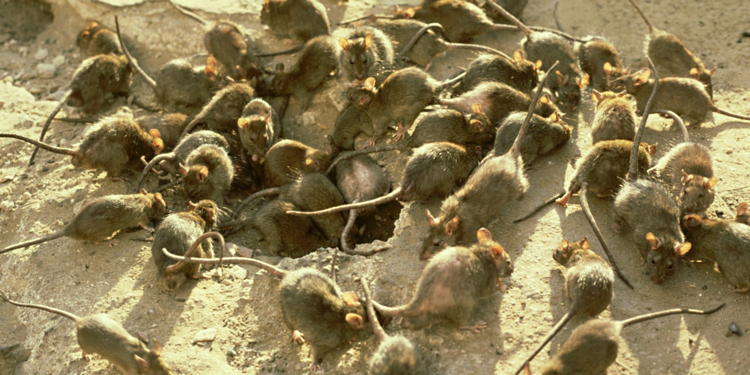The Mouse Plague Of Southern Australia

Image Source: rossrightangle.wordpress.com
In 1993, a record-breaking mouse plague bombarded southern Australia. It was estimated that about half a million tons of wheat were destroyed by about half a billion mice. The six-month epidemic destroyed fields and led some farmers to abandon their livelihoods altogether, leaving their farms to be reclaimed by nature. At least six farmers committed suicide because of the plague.
On average, a mouse and all of her offspring can produce 3,000 mice in one year. One pair of mice can give birth every three weeks, and the babies can start producing their own offspring just five weeks later.
Two mice alone can produce an estimated 500 babies within a five-month span. Do the math, and the numbers are astonishing. It’s easy to see how a mouse problem quickly turned into a full-fledged plague.
Farmers throughout the area focused their efforts on fighting off the plague with tried-and-true mousetraps. Some farmers would drown the mice in water troughs, while others tied tarpaulins to the ground in hopes that the mice would scurry beneath. After they baited the mice, they would crush the mice or set fire to the tarpaulins in a desperate attempt to eradicate them.
Most of the farmers’ attempts were unsuccessful. Poison proved to be the only effective method of extermination. Farmers would lay poison over grain, and the mouse would swarm and devour. After only one month, 35 million mice were killed. One farmer had to discard 70,000 dead mice from his property every single day.
Although the plague was devastating, it actually wasn’t unexpected–on average, a plague happens about once every ten years in Australia. In 1993, a deluge of rain brought about a particularly bountiful harvest, allowing the mice to survive and multiply in great numbers.
Fortunately for the farmers, the crops the mice depended on eventually ran out, and the population dropped down to a manageable size after about six months.





